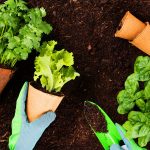Summer is prime time for gardens to flourish, but it also brings an array of pests eager to feast on your hard work. Protecting your plants from these unwelcome visitors is crucial to maintaining a healthy and vibrant garden. Instead of resorting to harsh chemicals, let’s explore natural solutions that are kinder to the environment and just as effective. Here’s how you can safeguard your garden with eco-friendly pest control methods.
Understanding Common Summer Pests
Identifying Garden Pests
First, you need to know your enemy. Summer gardens often attract a variety of pests like aphids, caterpillars, and spider mites. Aphids suck sap from plants, weakening them and potentially transmitting diseases. Caterpillars munch on leaves and stems, leaving your plants looking ragged. Spider mites spin webs and cause discoloration and stippling on leaves. Knowing what to look for—such as tiny holes, yellowing leaves, or webbing—can help you spot an infestation early.
Lifecycle and Behavior
Understanding the lifecycle and behavior of these pests is key to controlling them. For instance, aphids reproduce rapidly, so a few can quickly become a full-blown infestation. Caterpillars are often the larval stage of moths or butterflies, so knowing their egg-laying habits can help in targeting the right stage. Spider mites thrive in hot, dry conditions, which are common in summer. By understanding these patterns, you can tailor your pest control strategies more effectively.
Natural Pest Prevention Methods
Companion Planting
Companion planting is a fantastic way to deter pests while promoting plant health. Some plants naturally repel pests or attract beneficial insects. For example, marigolds are known to deter aphids, while basil can repel mosquitoes and flies. Planting nasturtiums near your vegetables can help ward off beetles and squash bugs. This method not only keeps pests at bay but also enhances biodiversity in your garden.
Beneficial Insects
Not all insects are bad news. Beneficial insects like ladybugs, lacewings, and predatory wasps can be your garden’s best friends. Ladybugs, for example, voraciously consume aphids. Lacewings prey on caterpillars and other soft-bodied insects. You can attract these beneficial insects by planting flowers like dill, fennel, and yarrow, which provide nectar and pollen. Creating a welcoming habitat for these insects helps maintain a natural balance in your garden.
Homemade Organic Pest Sprays
Neem Oil Spray
Neem oil is a powerful natural pesticide that disrupts pests’ lifecycles and deters them from feeding. To make a neem oil spray, mix two teaspoons of neem oil with one teaspoon of liquid soap in a quart of water. Shake well and spray it on affected plants, covering all surfaces, especially the undersides of leaves. Neem oil is effective against a variety of pests, including aphids, spider mites, and whiteflies.
Garlic and Pepper Spray
Another effective homemade remedy is garlic and pepper spray. Blend a few cloves of garlic and some hot peppers with water, strain the mixture, and add a few drops of liquid soap. This spicy concoction deters pests like aphids, beetles, and caterpillars. Spray it directly on plants, but be sure to test it on a small area first to ensure it doesn’t harm the plant.
Physical Barriers and Traps
Row Covers and Netting
Physical barriers like row covers and netting can effectively protect your plants from pests. Row covers are lightweight fabrics that allow light and water to pass through but keep pests out. They are perfect for protecting seedlings and young plants. Netting can be used to cover larger plants or fruit trees, preventing birds and larger pests from causing damage.
Sticky Traps and Diatomaceous Earth
Sticky traps can be placed around your garden to catch flying insects like whiteflies and gnats. Diatomaceous earth, a natural powder made from fossilized algae, can be sprinkled around plants to deter crawling insects. When pests come into contact with diatomaceous earth, it dehydrates them, effectively controlling their population. Use it sparingly and avoid inhaling the dust.
Cultural Practices for Pest Management
Healthy Soil and Plant Nutrition
Healthy plants are less susceptible to pests. Maintain healthy soil by using organic fertilizers and soil amendments. Compost, well-rotted manure, and other organic matter improve soil structure and provide essential nutrients. Healthy soil promotes robust plant growth, making your garden more resilient to pests.
Proper Plant Spacing and Pruning
Crowded plants can create a humid environment that attracts pests. Proper spacing ensures good air circulation, reducing the risk of pest infestations. Regular pruning removes dead or diseased plant material and promotes healthy growth. Keep your garden clean by removing debris where pests might hide.
Integrated Pest Management (IPM) Strategies
Monitoring and Early Detection
Regular monitoring is crucial for early pest detection. Inspect your plants frequently for signs of damage or pests. Early detection allows you to take action before infestations become severe. Use yellow sticky traps to monitor flying insects and check under leaves for hidden pests.
Rotating Crops and Plant Varieties
Crop rotation disrupts pest life cycles by changing the environment that pests depend on. Avoid planting the same type of crop in the same spot year after year. Planting a variety of crops also helps prevent pests from spreading throughout your garden.
Conclusion
Natural pest control methods are effective, sustainable, and safe for the environment. By integrating these strategies into your gardening routine, you can protect your plants from summer pests and enjoy a healthy, thriving garden. Remember, a healthy garden is a balanced one, where natural predators and beneficial insects keep pest populations in check. Embrace these natural solutions and watch your garden flourish!



